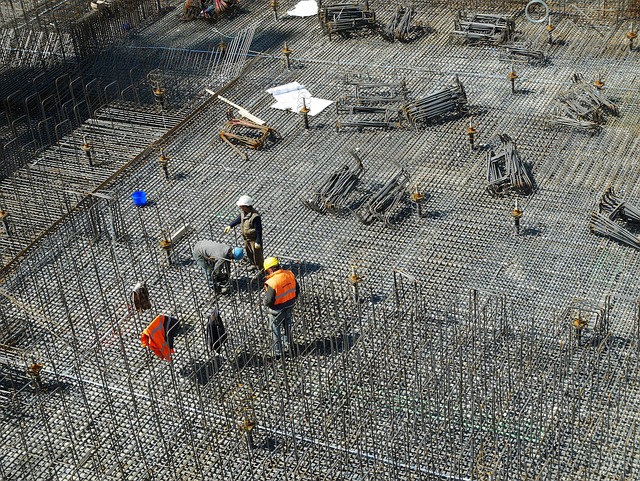Foundation Inspection is a critical home maintenance step ensuring structural integrity and long-term stability. It involves identifying issues like settlement cracks, wall bows, or water intrusion through advanced techniques. Regular inspections prevent minor problems from escalating, saving costs, and enabling targeted repairs. Homeowners should look for signs like cracks, uneven floors, or water seepage. Repairs range from cement injection to underpinning, slab jacking, or piering. Choosing a reputable company with quality past work and industry certifications ensures effective and lasting solutions. Foundation inspections also inform budgeting, accurate damage assessment, and realistic repair timelines. Proactive measures, including proper drainage and tree root prevention, minimize future repairs. For historical structures, inspections address soil settling, cracking, and moisture intrusion, preserving architectural investments.
“Ensuring a sturdy and safe home starts with understanding foundation repair assurance. This comprehensive guide delves into the essential aspects of maintaining your property’s structural integrity. From recognizing common signs of foundation issues through types of damage and repair techniques, this article equips you with knowledge.
Highlighting the paramount importance of a foundation inspection before any repairs, it also guides you on budgeting, timeframe expectations, and maintenance tips to prevent future problems. By exploring real-world case studies, gain insights into successful foundation repair assurance, ensuring peace of mind for your home’s longevity.”
Understanding Foundation Repair Assurance: A Comprehensive Guide

Foundation Repair Assurance is a crucial aspect of home ownership, offering peace of mind and long-term stability for any structure. It involves a comprehensive process that begins with a thorough Foundation Inspection. This initial step is pivotal as it identifies potential issues such as settlement cracks, uneven floors, or structural damage caused by various environmental factors like soil conditions, moisture intrusion, or poor construction practices. By addressing these problems early on through regular inspections, homeowners can prevent minor repairs from turning into major, costly disasters.
A Foundation Inspection provides a detailed assessment of a home’s foundational health. It includes examining the type and condition of the foundation, checking for signs of movement or instability, and evaluating potential causes. This data is then used to create a tailored plan for repair or prevention. Regular inspections are essential in identifying subtle changes in the foundation over time, allowing for prompt action and ensuring the structural integrity of the building for years to come.
The Importance of Foundation Inspection Before Repairs

Before embarking on any foundation repair, a thorough inspection is paramount. This step is a game-changer in ensuring that the root causes of issues are accurately identified and addressed. Foundation inspections provide a roadmap for repairs by revealing structural problems like cracks, shifts, or settlement, which may not be immediately visible. Professionals use advanced techniques to assess the overall health of your foundation, enabling them to tailor solutions specifically to your needs.
Regular inspections also help in preventing future damage. By identifying potential issues early on, you can take proactive measures to safeguard your property from costly and extensive repairs down the line. This is especially crucial in today’s digital era where modern technology enhances the precision and efficiency of these assessments, making it easier to navigate the complex landscape of foundation maintenance.
Common Signs Indicating Foundation Issues Needing Repair

Many homeowners often overlook subtle signs that could indicate serious foundation problems, prompting the need for a foundation repair service. Regularly checking for these common indicators is crucial before they escalate and lead to costly damage. One of the most visible signs is cracks in the walls or floors. These cracks may be hairline thin or wider, appearing as vertical, horizontal, or diagonal lines. Another telltale sign is uneven or sloping floors, where some sections are higher or lower than others. Doors and windows that stick or do not close properly can also point to foundation issues, as can visible gaps between doors/windows and their frames.
Unusual noises like creaking or groaning sounds coming from the walls or floors should not be ignored. Additionally, if you notice water seeping into your home through cracks or gaps in the foundation, it could indicate a serious problem that requires immediate attention during a foundation inspection.
Types of Foundation Damage and Their Reparation Techniques

Foundation damage can manifest in various forms, each requiring specific repair techniques. One common issue is settlement cracks, which often occur due to soil compaction or drying. These can be addressed by injecting hydraulic cement into the cracks to fill and stabilize them. Another type of damage is bowing walls, resulting from poor initial construction, soil movement, or excessive moisture. Repair involves underpinning, where additional support is inserted beneath the affected wall to prevent further bowing.
Heaving, caused by ground swelling or variations in groundwater levels, can lead to uneven floors and settling structures. To rectify this, professionals may employ methods like slab jacking or piering, where hydraulic jacks lift and level the slabs, or replace poorly performing footings with new, more robust ones. Regular foundation inspections are crucial for identifying these issues early, ensuring prompt repairs and minimizing long-term damage.
Assuring Quality: What to Look for in a Foundation Repair Company

When choosing a foundation repair company, ensuring quality should be your top priority. Start by requesting and reviewing their past work, including before-and-after photos and customer testimonials. This visual evidence will give you a clear idea of their capabilities and the results they can deliver.
During your Foundation Inspection, pay close attention to the methods and materials used. Reputable companies should employ advanced techniques and high-quality products to ensure long-lasting repairs. Additionally, look for certifications and affiliations with industry associations, as these indicators assure adherence to professional standards and best practices.
Cost Considerations: Budgeting for Foundation Repair Projects

When planning a foundation repair project, budgeting is a critical step that cannot be overlooked. The cost of repairs can vary widely depending on several factors, including the extent of damage, the type of foundation, and the specific techniques required for restoration. It’s essential to conduct a thorough Foundation Inspection to accurately assess these elements. Professional inspectors can provide detailed reports on the current state of your foundation, pinpointing areas of concern and offering potential solutions with associated price tags.
This initial investment in an inspection is invaluable as it allows homeowners to secure accurate estimates from contractors. With a clear understanding of the project’s financial implications, budgeting becomes more manageable. Homeowners can then compare quotes, ensuring they receive competitive prices for quality work. Effective budgeting ensures that repairs are completed efficiently without compromising on durability and longevity.
Timeframe and Process: Expectation Management for Repairs

When it comes to foundation repair, understanding the timeframe and process is vital for managing expectations. After a comprehensive foundation inspection, professionals will assess the extent of the damage and provide an accurate estimate. This step is crucial as it sets clear expectations regarding the duration of the repair project. Repairs can vary significantly in complexity and size, from minor crack repairs to extensive underpinning work.
The timeline for completion depends on various factors, including weather conditions, accessibility to the damaged areas, and the availability of specialized materials. On average, foundation repairs can take anywhere from a few days for simple fixes to several weeks for more intricate projects. Effective communication between homeowners and contractors is key to ensuring everyone is aligned throughout this process.
Maintenance Tips to Prevent Future Foundation Problems

Regular foundation inspections are a proactive step towards preventing future issues. Homeowners should schedule professional assessments every few years, especially in areas prone to extreme weather conditions or soil instability. These inspections can identify subtle signs of damage, such as cracks or uneven floors, which might otherwise go unnoticed but could indicate deeper structural problems.
Preventive maintenance plays a crucial role in safeguarding your home’s foundation. Simple tasks like ensuring proper drainage around the property, fixing water leaks promptly, and preventing tree roots from encroaching on the foundation can significantly reduce the risk of future repairs. Additionally, maintaining a safe distance between structures and trees, monitoring soil moisture levels, and addressing any settlement issues early on are all integral parts of long-term foundation care.
Case Studies: Successful Foundation Repair Assurances in Action

In the realm of structural integrity, foundation repair assurance stands as a beacon of protection for homes and buildings. Through meticulous foundation inspection, professionals uncover subtle signs of distress, enabling them to implement targeted solutions. Consider a recent case where a historical structure exhibited signs of settling and cracking. A comprehensive foundation inspection revealed a weakened soil bearing capacity due to changing climatic conditions. With this insight, experts devised a plan that involved deep pile driving and soil stabilization techniques, effectively restoring the building’s structural integrity.
Another compelling example involves a newly constructed home experiencing uneven floor levels. The root cause was identified as improper foundation drainage leading to moisture intrusion. The solution? A strategic overhaul of the drainage system coupled with a robust waterproofing membrane. This not only levelled the floors but also prevented future damage, showcasing the tangible benefits of proactive foundation repair assurance. These real-world scenarios underscore the significance of professional evaluation and timely intervention in safeguarding architectural investments.
